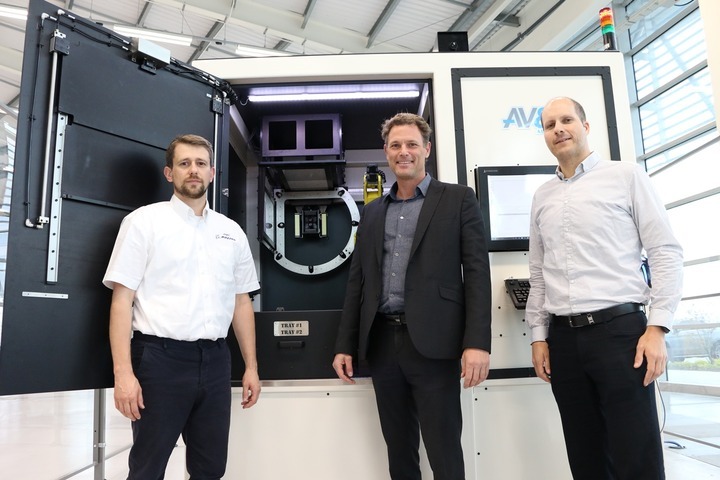Canadian company AV&R partner with the AMRC to explore the future of automated visual inspection
05 February 2018The concept for a new automated visual inspection system that uses robotics to manipulate metallic components is being tested at the University of Sheffield’s Advanced Manufacturing Research Centre (AMRC).
Canadian automation, machine vision, and robotics solutions specialist AV&R is working with the AMRC to develop the new system in a simulated industrial environment, proving out the technology and de-risking any potential investment for end users.
The AMRC’s Integrated Manufacturing Group (IMG) will be conducting trials of the AV&R system, which is now deployed at Factory 2050 thanks to funding from the High Value Manufacturing Catapult.
Automated visual inspection refers to the automating of the detection and classification of defects using robotics, for high-value complex metallic components used in the industries such as aerospace and medical.
IMG Senior Project Engineer, Harry Burroughes, said: “Visual quality inspection processes are vital in industrial sectors such as aerospace and medical; where the assurance of high-quality is essential for a complex component to meet expected performance levels.”

AMRC engineers are configuring the system to collect significant data about AV&R’s testing process to optimise the set-up so the system can be used for bespoke inspection processes and be verified for use on multiple components across various industrial sectors. The team will also create a ‘digital twin’ that will assist operators and aid remote assistance for preventative maintenance.
Philippe Masson, Strategic Partnerships Manager of AV&R Aerospace said: “The system focuses on the inspection of small surface defects, with our main market being within aerospace inspection processes.
“Our new capability of inspecting different type of parts was the catalyst for discussions with the AMRC about future automated visual inspection tests which could be performed on high value components. Together, we are exploring latest technologies for a human operator to review the machine’s results with augmented reality.”
Harry Burroughes, who is working on the project for AV&R, said: “Through our trials of the system we will processes various configurations of photometric data which will be translated and presented to the user of the system through various digital representations for user-friendliness.”
“The development of this system will make quality testing more efficient, more repeatable and allow manufacturers to increase their testing capacity, speeding up the overall manufacturing process for complex components.
“The project will allow the AMRC to extend our research and increase our capability for advanced visual inspection techniques for complex components used in many high value manufacturing sectors,” he added.
AV&R is keen to stay ahead of the curve when it comes to the development of new technologies and achieves this by investing in research and development; partnering with research centres. Philippe Masson said: “What is interesting about the AMRC is that as a member we have access to their networks and industrial contacts, this means we will be able to work together to understand how our system can be developed to best serve the requirements of inspection processes in other industrial sectors.”
“The work we do with the AMRC will allow us to gain valuable feedback and data from the use of the system to inform and share with our customers on the reliability and performance. It will be a valuable benefit to be able to disseminate information backed by a world-renowned organisation, one with a well-known reputation.”

